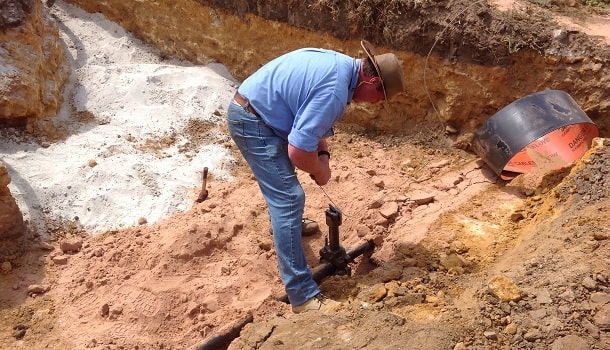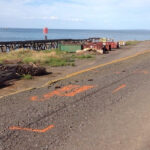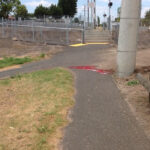If you are working on a contract project, certainly there might be several things occupying your mind. However, there are certain things that you need to cross off. For example, you need to call Dial Before You Dig for a reliable utility location services before you began your digging project. This is essential for the safety of your crew.
But, let’s accept it – accidents happen and the likelihood of damaging underground utilities is present in every excavation location. What happens if you accidentally hit an underground utility? Let’s take a look.
In case, if you hit an underground asset, it can lead to expensive penalties – project downtime, costly repairs and serious fatalities. In the unfortunate case you do accidentally hit any underground assets, follow below-mentioned advice:
- Get Everyone to SafetyThe first and foremost thing that you need to do is stop the work and ensure that the crew and everyone on site are safe. For instance, if an electrical cable was hit, the site might become electrically faulty or perhaps someone was electrocuted.If there are injuries, the crew will immediately report to you. But, it’s wise to first check if someone was hurt or if bystanders are at risk. And if there are any injuries or any other serious issues, call relevant local authorities and emergency medical help immediately.
- Controlling The Risks & HazardsOnce you ensure that everyone is safe, it’s time to opt for damage control. You need to ensure that not only everyone stay at a safe distance from the damaged utility, but also that the damage doesn’t extend any further.A safe distance should be maintained to avoid contact with underground pipes and cables. In case, if an underground storage tank was hit, there’s a possibility of the potential fumes being released which might endanger the health of everyone, nearby.
You need to also keep in mind that even slight damage can be hazardous. There’s a common misconception amongst the people that underground utility damage is all about bursting of an underground cable or pipe.
However, in many cases, there’s a possibility that you only cause slight damage to a marker tape tracer wire or pipe coating. In such scenarios, you should implement the safety precautions and contact the asset owner, right away.
What Are the Risks & Dangers Associated With Working Near Underground Utilities?
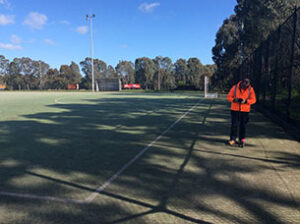 Before conducting the excavation, one should be very well aware of the risk and dangers present on the digging site. This ensures that you know what to do when an unfortunate incident occurs.
Before conducting the excavation, one should be very well aware of the risk and dangers present on the digging site. This ensures that you know what to do when an unfortunate incident occurs.
- Working near gas assets presents the risk of fires and explosions. Moreover, people in the surrounding area can be harmed by a sudden break out of the gas.
- In case, the petroleum or oil pipelines are damaged, it will not only emit the gas and volatiles but can also contaminate the waterways and soil.
- Besides this, other utilities can also cause serious injuries and fatalities. For instance, hitting a live electrical cable can result in electrical shocks. This can also make the area electrically defective. The situation can worsen, when the electrical charge mixes with gaseous mixtures and leads to fire or explosion.
- Water pipes move water under high pressure. When you hit the water pipe, it may release propel debris along with high-pressure water. This can also flood the area and cause damage to the machinery and people. Moreover, if an electrical current flow through the ruptured water pipe, the crew can get an electrical shock.
Dangers Associated With Working Near:
- Telecom CablesDamage to telecom cables might result in the isolation of the entire vicinity. Moreover, getting in touch with emergency services becomes impossible. Hitting optical fibre cables may expose people to harmful infrared rays which can damage their eyes and can also cause injuries and fatalities.
- Sewer LinesWhen you hit a sewer line, it might not only propel debris, but also leak wastewater which can further contaminate the water supply. Damage to sewage can also expose people to hazardous gases and waste.
Any damage to underground assets often exposes people and crew to water, fire, electrical and health hazards. Even minor damages need to be taken seriously.
As time passes, this damage can get worse and expose people to numerous risks and dangers. Thus, it’s highly advisable to terminate work and apply safety measures immediately.
Things You Need to Do If You Accidentally Hit an Underground Asset:
- Emergency PlanBefore you commence any excavation or digging near an underground asset, it is wise to have an emergency plan in hand. Remember, that accident makes the site frenzy. Though emergency services are prompt, it’s better to have a hands-on approach. You should also have a plan prepared to handle the chaos.
- Contact Asset OwnersOnce you ensure that everyone is safe and sound, call the relevant asset owners right away. They know best how to fasten and control the damage. They can also help in lessening the service interruptions to businesses and residences in the vicinity.
- Re-identify the AssetsYou might need to wait for some time before you can proceed again with the work. But before commencing any work, the first thing that you need to do is re-identify the assets and risk associated with it. Try to get an updated evaluation of the site from the utility location services provider, especially the detailed pipe location and cable location.
- Look For MarkingsBefore you dig the site, ensure all the indications are identified and noted. Often, the sites are marked with different colours to indicate the presence of underground pipe and cables.
- Orange – electricity
- Yellow – gas
- Blue – water
- White – communications
However, these indicators don’t offer complete guidance about the pipe and cable locations. This is because; the utilities don’t follow a straight path.
- Dial Before You Dig
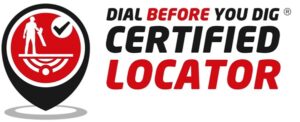 A certified utility location service provider can educate you with complete information about the underground utilities. They can develop a precise and detailed map that exhibits the pipe and cable locations (including depth) in that particular area. Aside from identifying the risk, accurate underground utility mapping service can also help speed up your project.
A certified utility location service provider can educate you with complete information about the underground utilities. They can develop a precise and detailed map that exhibits the pipe and cable locations (including depth) in that particular area. Aside from identifying the risk, accurate underground utility mapping service can also help speed up your project.
It’s wise to get in touch with the underground utility mapping company who are also certified Dial Before You Dig locators. This way you can maintain the safety of your team and avoid causing any damage to the underground assets.

